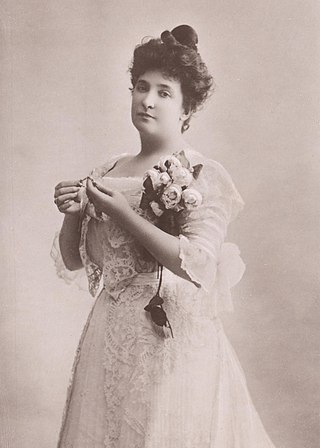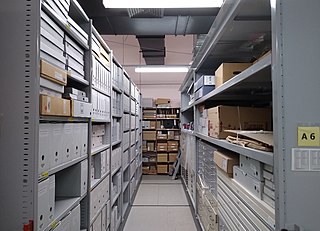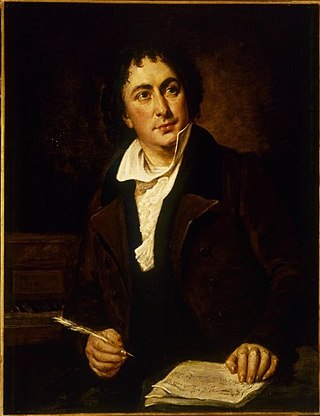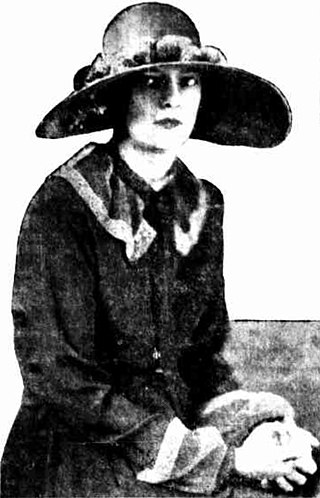
Percy Aldridge Grainger was an Australian-born composer, arranger and pianist who moved to the United States in 1914 and became an American citizen in 1918. In the course of a long and innovative career he played a prominent role in the revival of interest in British folk music in the early years of the 20th century. Although much of his work was experimental and unusual, the piece with which he is most generally associated is his piano arrangement of the folk-dance tune "Country Gardens".

Dame Nellie Melba was an Australian operatic lyric coloratura soprano. She became one of the most famous singers of the late Victorian era and the early 20th century, and was the first Australian to achieve international recognition as a classical musician. She took the pseudonym "Melba" from Melbourne, her home town.

Geoffrey Peter Bede Hawkshaw Tozer was an Australian classical pianist and composer. A child prodigy, he composed an opera at the age of eight and became the youngest recipient of a Churchill Fellowship award at 13. His career included tours of Europe, America, Australia and China, where he performed the Yellow River Concerto to an estimated audience of 80 million people. Tozer had more than 100 concertos in his repertoire, including those of Mozart, Beethoven, Liszt, Brahms, Tchaikovsky, Medtner, Rachmaninoff, Bartók, Stravinsky, Prokofiev and Gerhard.

Jonathan Anthony Rose is an Australian violinist, cellist, composer, and multimedia artist. Rose's work is centered in the experimental music known as free improvisation, where he has created large environmental multimedia works, built experimental musical instruments, and improvised violin concertos with accompanying orchestra. He has been described by Tony Mitchell as "undoubtedly the most exploratory, imaginative and iconoclastic violin player who has lived in Australia".

The Arts in Australia refers to the visual arts, literature, performing arts and music in the area of, on the subject of, or by the people of the Commonwealth of Australia and its preceding Indigenous and colonial societies. Indigenous Australian art, music and story telling attaches to a 40–60,000-year heritage and continues to affect the broader arts and culture of Australia. During its early western history, Australia was a collection of British colonies, therefore, its literary, visual and theatrical traditions began with strong links to the broader traditions of English and Irish literature, British art and English and Celtic music. However, the works of Australian artists – including Indigenous as well as Anglo-Celtic and multicultural migrant Australians – has, since 1788, introduced the character of a new continent to the global arts scene – exploring such themes as Aboriginality, Australian landscape, migrant and national identity, distance from other Western nations and proximity to Asia, the complexities of urban living and the "beauty and the terror" of life in the Australian bush.
Move Records is an Australian record label that was started in 1968 by Martin Wright. It focuses primarily on classical and jazz music, particularly Australian, and features most frequently Melbourne-based musicians and composers.
Raymond Douglas Lawrence is an Australian organist who is director of music at the Scots' Church, Melbourne and Teacher of the Organ at the University of Melbourne.

The Mechanics' Institute, Sorrento is a building classified by the National Trust of Australia and located at 827 Melbourne Road, Sorrento, Victoria, Australia.

The Australian Music Centre (AMC), founded as Australia Music Centre in 1974 and known as Sounds Australian in the 1990s, is a national organisation promoting and supporting art music in Australia. It operates mainly as a service organisation, and co-hosts the Art Music Awards along with APRA AMCOS. It also publishes Resonate Magazine.
Vera Florence Bradford was an Australian classical pianist and teacher, with a very long career. Her playing was admired for its depth and beauty of tone, classical unity and tremendous power.

The Australian Performing Arts Collection at Arts Centre Melbourne, formerly known as Performing Arts Museum (PAM), is the largest specialist performing arts collection in Australia, with over 780,000 items relating to the history of circus, dance, music, opera and theatre in Australia and of Australian performers overseas.

John Harry Grainger was an Australian architect and civil engineer, who was also the father of musician Percy Grainger. Over his long career, between 1878 and 1915, he designed 14 bridges, notably Princes Bridge in Melbourne, and as an architect, designed half a dozen major public buildings, mainly in New Zealand, Perth, and Melbourne, notably the WA Supreme Court. He also designed some major commercial buildings in Melbourne such as Georges Store.
Penelope Mary Thwaites is a concert pianist and composer, recording artist and editor. Born in the United Kingdom of Australian parents, she is a citizen of both countries. Thwaites is best-known for her interpretations of the music of Australian composers, particularly Percy Grainger.
Behind the Legend is 1972 anthology series based on the lives of various Australians hosted by Manning Clark.

Australian classical music has developed from early years in the Australian colonies, until today. Today, each state has an orchestra and there are many major venues where classical music is performed.
Woof! or Woof! Percussion Ensemble were an Australian classical music, four-piece percussion ensemble formed in February 1995 by Robert Cossom, Matthew Goddard, Stephen Hardie and Tracey Patten. In July 1997 they appeared on Australian Broadcasting Corporation's radio, ABC Classic FM's Sunday Live presented by Peter Clarke performing at Iwaki Auditorium, Melbourne. Instrumentation used included xylophone, marimba, vibraphone, drums, key and non-pitched percussion, and log drums.
Thérèse Radic is an Australian musicologist and playwright.

Helen Dora Lempriere was an Australian painter, sculptor and printmaker. She is particularly known for incorporating pictorial motifs, beliefs, and Aboriginal myths into her artworks.
The Melbourne Electronic Sound Studio (MESS) is an Australian independent non-profit arts organization founded by sound artists Robin Fox and Byron J Scullin in 2016. MESS features a collection of synthesizers, drum machines, and other electronic instruments which are available to use.
This is a list of exhibitions held by the Australian Performing Arts Collection at the Arts Centre Melbourne, Melbourne, Victoria, organised chronologically and grouped by decade until 2017. Since 2017, the Australian Music Vault has housed a permanent exhibition utilising the APAC collection. The collections on display are rotated regularly. Previous exhibitions have toured nationally and internationally, while other collections are occasionally loaned.












